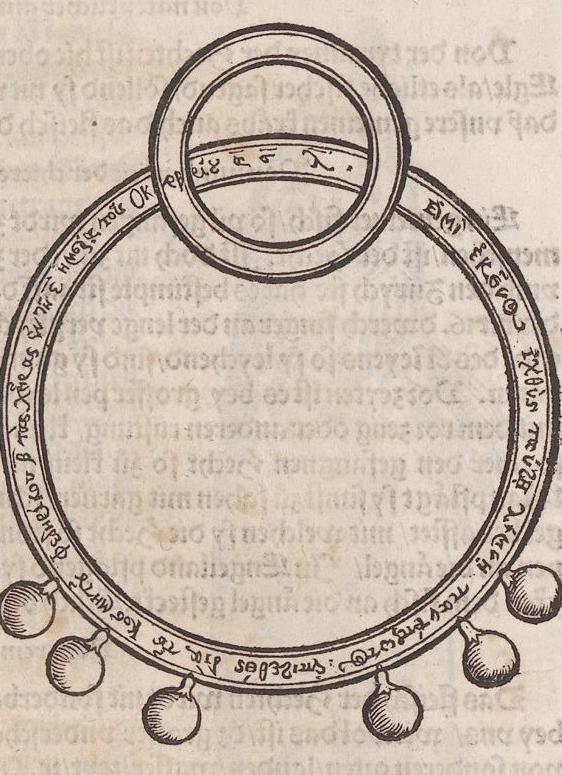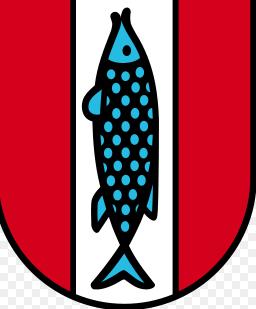A Very Old Carp January 30, 2017
Author: Beach Combing | in : Modern , trackbackThis is an uncommonly good fish story. It appears in a curious book entitled: Johann Heinrich Cohausen, Hermippus redivivus, or, The sage’s triumph over old age and the grave. If you want to achieve immortality you should probably give said book a read. In any case let’s move on to a centuries-old carp.
It is not only the Inhabitants of the Land and Air that attain to such vast Ages, such as dwell in the Waters seem to have yet a larger Share of Life, of which I will give one well attested Instance out of many. In the Year 1497, in a Fishpond in Suabia, near Huilprin in Germany, they took a Carp of a prodigious size, which had in his Ear, a Ring of Copper, with these Words in Latin. I am the first Fish that was put into this Pond by the Hands of Frederick II, Governor of the World, the 5 October, 1230. This Carp appeared to have lived 259 years, and probably might have lived much longer, had he not been taken out [95].
Beach does not know whether medieval fish were tagged. He does not know whether Frederick II had a fish pond. He does not know whether in 1497 an abnormally large fish was caught in Swabia. He does know that there is good evidence for decade-old carp and more difficult but not impossible claims that carp can make it to a hundred. He also knows that there are a series of stories about animals being discovered with messages on them proving their great age: there are several, for example, involving tortoises.
It would be interesting to find the source for this tale: Cohausen does not, shall we say, inspire confidence. His source, if this is not just a bar-room tale, might be another matter… Can anyone help with the German or Latin text behind Cohausen? drbeachcombing AT yahoo DOT com
Gary V, Jan 30 2017: Gary writes in after reading the German version of Wikipedia. ‘It wasn’t a carp, it was a pike, and it wasn’t in Suabia, it was in Kaiserslautern (or maybe Heilbronn). [Beach might add that it was in Greek not Latin!] The coat of arms of the city of Kaiserslautern has the pike right there, so the story must be true. On the other hand, wikipedia says that the itinerary of Frederick II is well known, and he wasn’t in Germany between 1220 and 1234. Conrad Gessner mentions the story (he favored Heilbronn), and Baron Cuvier wrote a seven-page article denouncing the story. Lots more detail in the wikipedia article. Lots of fun for all from the renaissance on.’
Reading this page [Beach writes now] there seem to have been a series of these fishy legends. One did involve a carp and was recorded by the Brothers Grimm. There were two carp in fact and Frederick put gold chains around both.
Here, meanwhile, is the fish ring and the Greek inscription.
Here is the fishy scutcheon: was the legend, in the end, an attempt to explain this design?
Bruce T, 23 Feb 2017: The trout with golden ring seems to be a common motif in European folklore. The famed Trappist Monastery of Orval in Belgium uses the trout and the ring on the label of its ales and cheeses in honor of a legendary Medieval benefactress. Orval’s ale is my favorite beer. It’s often tempted me to take up holy orders.
Stephen D. 23 Feb 2017: To quote an unimpeachable historian, myself: ‘The detail of the ring alone would be enough to convince me that the story must be false: for I first came across it told of Charles V of France, in the misty forests of the middle ages capturing a great stag, whose golden collar read Caesar mihi hoc dedit, Caesar gave me this; then as a ring of James I and VI, decorating an aged falcon in South Africa; and at last I traced it to (inevitably) Pliny, father of lies and of popular encyclopaedias of natural history, who also makes it a stag’s collar but names Alexander the Great as donor. Furthermore, the pike’s skeleton preserved in Mannheim Cathedral is impossibly long, and reinforced by the vertebrae of several extra pike.’ Unfortunately, I wrote this long ago, in pre-electronic days, and I can’t find the notes I based it on. The German Wikipedia article says that the Mannheim Cathedral skeleton is in fact that of a whale.
Richard S., 23 Feb 2017: Wherever the fish was found, I would be less interested in seeing the ring than seeing a carp with ears…





